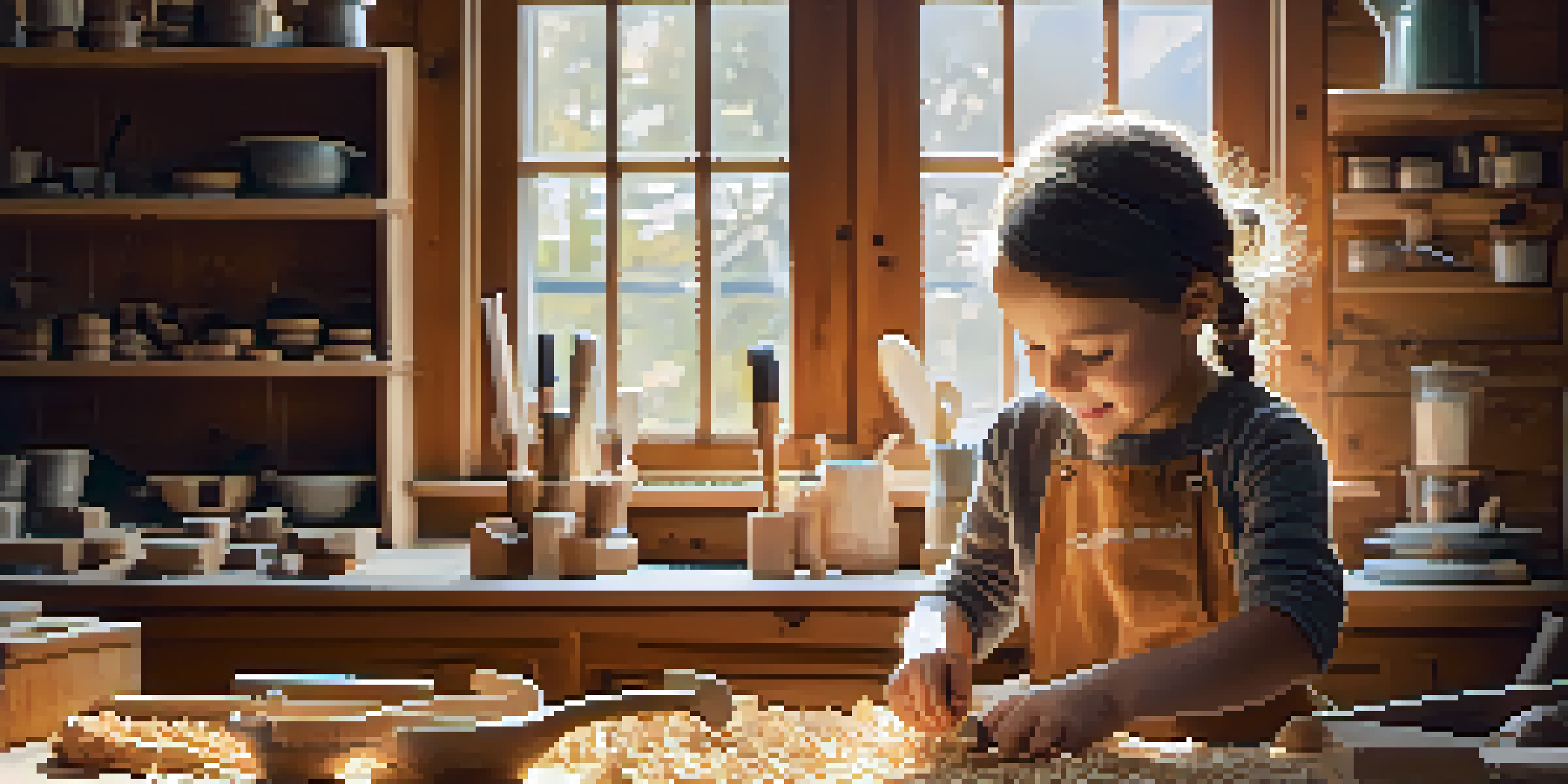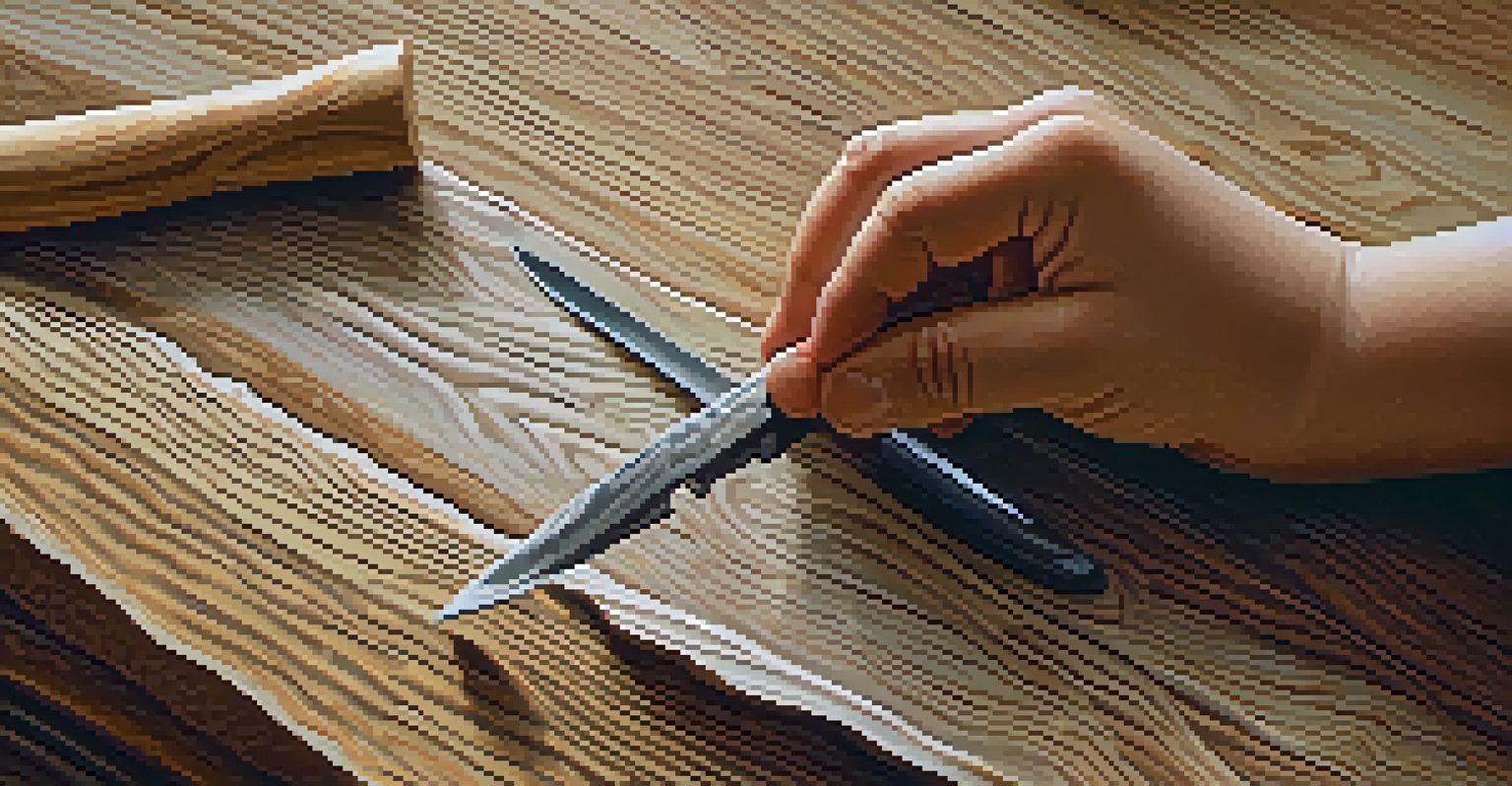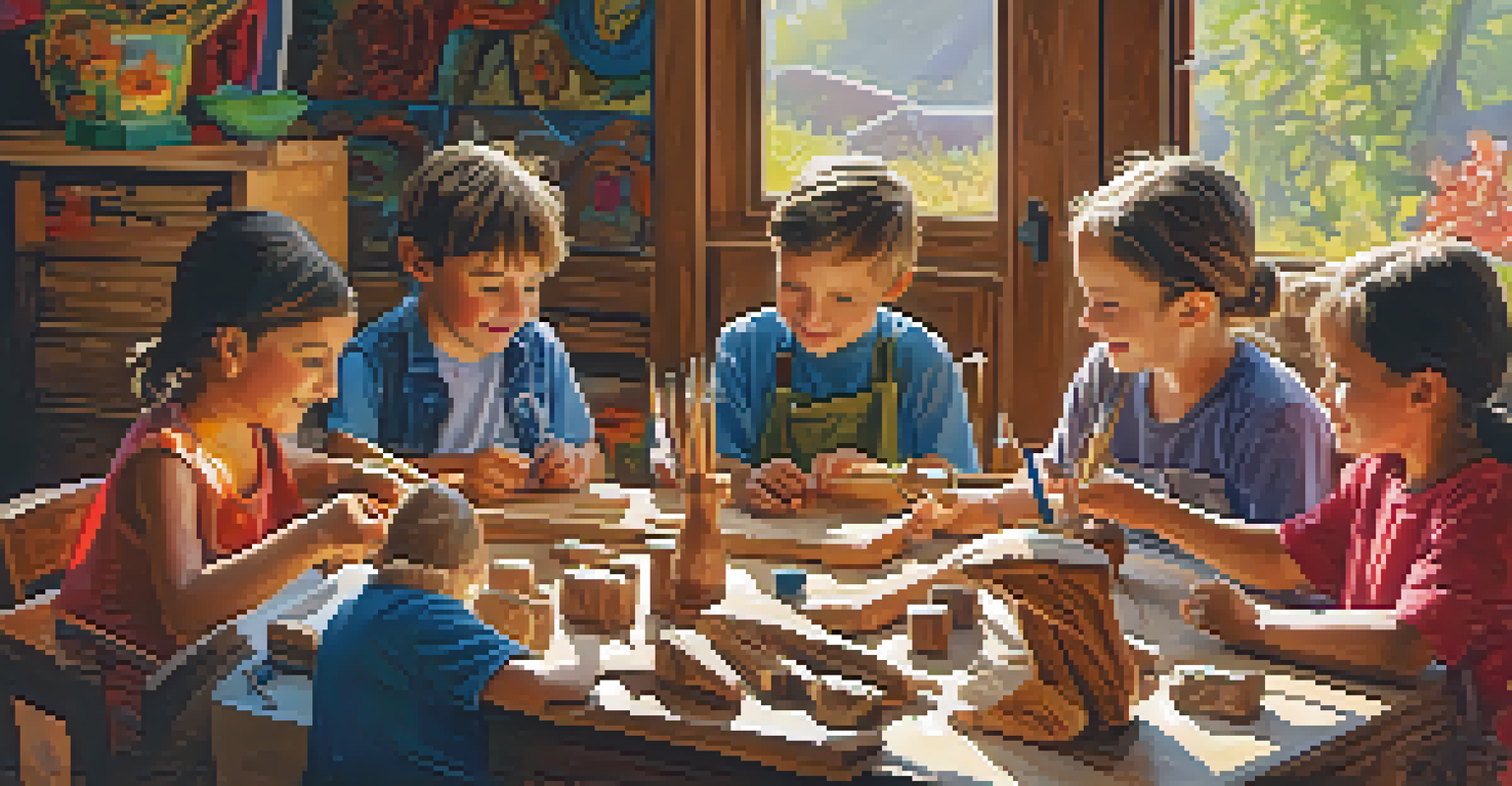How to Teach Kids the Basics of Safe Wood Carving

Understanding the Basics of Wood Carving for Kids
Wood carving can be a fun and rewarding hobby for kids, bringing creativity to life. It involves shaping wood into useful or decorative items, and it can be a great way to develop fine motor skills. Starting with simple projects allows children to grasp the basics without feeling overwhelmed. Familiarizing them with the tools and techniques sets the stage for a safe and enjoyable experience.
Every artist was first an amateur.
Begin by explaining the different types of wood carving tools, such as whittling knives, gouges, and chisels. Each tool has a specific purpose, making it essential for kids to understand how to use them properly. Emphasizing that safety comes first will help instill good habits from the start. You can use relatable examples, like how a chef respects their knives, to convey the importance of handling tools carefully.
Choose projects that are age-appropriate, like carving a simple spoon or a small animal. These projects keep children engaged while allowing them to practice their skills. Gradually introduce more complex designs as they gain confidence and mastery. This approach not only builds their abilities but also keeps the excitement alive in their woodworking journey.
Essential Safety Guidelines for Young Carvers
Safety should always be the top priority when teaching kids wood carving. Before starting any project, ensure that children are wearing protective gear, such as safety goggles and gloves. This not only protects their eyes and hands but also helps cultivate a sense of responsibility. Relating this to wearing a seatbelt in a car can help them understand the importance of protection.

Establish a designated carving area where kids can work safely without distractions. This space should be free from obstacles, and all tools should be stored properly when not in use. Teaching them to respect their workspace will encourage them to take ownership of their activities. You can compare it to how an artist prepares their studio, highlighting the significance of a tidy and safe environment.
Safety First in Wood Carving
Prioritizing safety by using protective gear and maintaining a tidy workspace is essential for young carvers.
Supervision is crucial, especially for younger children. Always be present during the carving process to provide guidance and intervene if necessary. This not only protects them but also gives you an opportunity to bond over a shared activity. Creating a supportive atmosphere where they feel comfortable asking questions will enhance their learning experience and confidence.
Choosing the Right Tools for Young Hands
Selecting appropriate tools is key to a successful wood carving experience for kids. Start with beginner-friendly tools that are designed for small hands, like lightweight whittling knives. These tools are easier to control, which is essential for maintaining safety and accuracy. You might even consider tools with safety features, such as rounded tips, to minimize the risk of injury.
Mistakes are proof that you are trying.
Introduce kids to the concept of tool maintenance as part of the learning process. Teaching them how to keep their tools clean and sharp not only enhances performance but also fosters a sense of pride in their equipment. Compare this to how they might take care of their bikes or sports gear; proper maintenance leads to better performance and longevity.
As they progress, you can gradually introduce more advanced tools, ensuring they understand the purpose and safety measures associated with each. Encourage them to ask questions and express their feelings about the tools they’re using. This open communication will help you gauge their readiness for more complexity while ensuring they feel supported in their learning journey.
Basic Wood Carving Techniques for Kids
Teaching kids basic carving techniques is essential for building their confidence. Start with the 'push cut' technique, where they push the knife away from their body while carving. This method is not only safe but also effective for shaping wood. Using simple shapes, like rounded edges or points, will help them practice this technique without frustration.
Next, introduce the 'pull cut,' where they draw the knife towards themselves. This technique can be harder for younger kids to master, so patience is key. Remind them to always keep their fingers behind the blade to avoid accidents. You can also encourage them to practice on scrap wood, allowing them to experiment without the pressure of ruining a project.
Tools Should Fit Small Hands
Choosing beginner-friendly tools designed for kids helps ensure a safe and enjoyable wood carving experience.
Finally, teach them how to combine these techniques to create more complex designs. Encourage creativity by allowing them to envision what they want to carve and how to achieve it using these foundational skills. This not only fosters artistic expression but also shows them the satisfying results of their hard work.
Encouraging Creativity and Personal Expression
Wood carving is a fantastic outlet for creativity, and encouraging kids to express themselves is vital. Allow them to come up with their own designs or modify existing ones to make them unique. This personal touch can make their projects feel special and give them a sense of ownership. You might share stories of famous artists or creators who started with simple ideas and turned them into masterpieces to inspire them.
Creating a supportive environment for creative thinking is essential. Provide them with access to books, videos, or online resources about wood carving to spark their imagination. Organizing workshops or inviting friends to join in can also create a fun social aspect to the activity. Sharing ideas and techniques with peers can lead to new discoveries and inspire collaboration.
Celebrate their achievements, whether it’s a finished project or the progress they've made. A simple acknowledgment or displaying their work can boost their confidence and motivate them to take on new challenges. Remind them that every artist has room for growth, and the journey is just as important as the destination.
Common Mistakes and How to Avoid Them
Even the most seasoned woodworkers make mistakes, and it's crucial to teach kids that errors are part of the learning process. One common mistake is not paying attention to the grain of the wood, which can lead to splitting or chipping. Encourage them to observe how the wood behaves as they carve, helping them understand the material better. Use analogies like how a musician learns to play an instrument; practice helps them master the nuances.
Another mistake is rushing through the process. Remind kids that carving is not a race; taking the time to focus on details can lead to better outcomes. Encourage them to enjoy each step of the process and be mindful of their techniques. Relating this to cooking might resonate—good meals often require patience and careful preparation.
Mistakes are Learning Opportunities
Teaching kids that errors are a natural part of the learning process encourages resilience and patience in their carving journey.
Lastly, remind them not to be afraid to ask for help. Whether it’s from you or a more experienced carver, seeking guidance can prevent mistakes and enhance their learning. Building a culture of open communication will help them feel comfortable discussing challenges and seeking solutions, reinforcing the idea that collaboration can lead to better outcomes.
Creating a Positive Experience for Future Wood Carvers
The ultimate goal of teaching kids wood carving is to create a positive and enjoyable experience. Emphasize the fun aspects of carving, such as the satisfaction of creating something from scratch. Sharing your own experiences, whether good or challenging, can help them see that every carver has a unique journey. This connection can make the learning process feel more relatable and engaging.
Encouraging kids to share their creations with family and friends can also enhance their experience. Organizing a small showcase at home or sharing photos online can make them feel proud of their work. This recognition can boost their self-esteem and motivate them to continue exploring their skills. You might draw parallels to school projects—presenting their work can be a rewarding experience.

Finally, keep the lines of communication open. Regularly check in with them about their feelings toward wood carving and any challenges they encounter. This ongoing dialogue will allow you to provide support and encouragement tailored to their needs. By fostering a safe and creative environment, you’ll help them develop a lifelong love for wood carving.